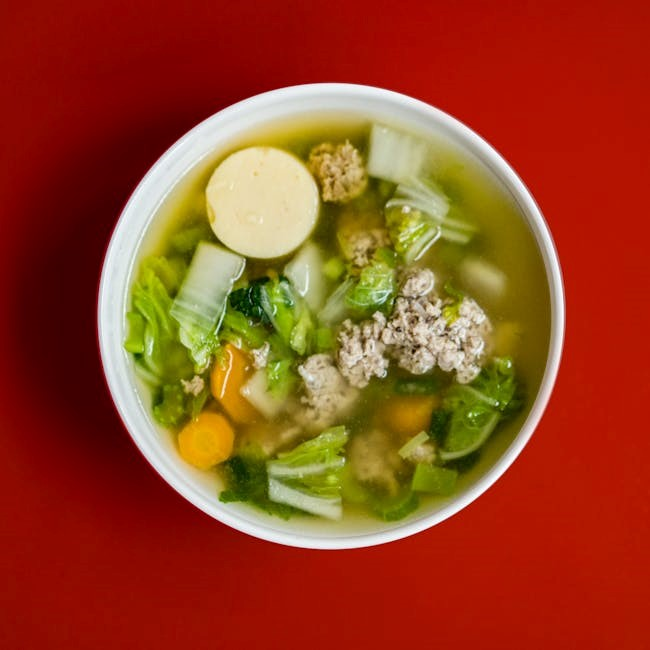Smithfield Pork Tenderloin is a favorite among home cooks, offering tender, juicy, and flavorful results with minimal effort. Pre-seasoned for convenience, it’s perfect for oven, grill, or pan cooking. A lean protein option, it’s ideal for quick, delicious meals.
1.1 Overview of Smithfield Pork Tenderloin
Smithfield Pork Tenderloin is a premium cut of pork known for its exceptional tenderness and rich flavor. It is pre-seasoned with a savory blend of spices, making it a convenient option for home cooks. This lean cut of meat is not only delicious but also versatile, as it can be cooked in various ways, including oven-roasting, grilling, pan-searing, or even slow cooking. The tenderloin is naturally juicy and offers a melt-in-your-mouth texture when cooked properly. Its pre-marinated packaging ensures that the flavor is evenly distributed, eliminating the need for additional seasoning. Whether you’re preparing a quick weeknight meal or a special occasion dish, Smithfield Pork Tenderloin is a reliable choice. It’s ideal for those seeking a protein-packed meal that’s both flavorful and easy to prepare. The tenderloin’s adaptability to different cooking methods makes it a favorite among both novice and experienced cooks alike.
1.2 Why Choose Smithfield for Pork Tenderloin
Smithfield Pork Tenderloin stands out as a top choice for home cooks and professional chefs alike due to its exceptional quality and convenience. Known for its tender, juicy texture and rich flavor, Smithfield tenderloins are pre-seasoned with a delicious blend of spices, eliminating the need for extra preparation. This makes them a time-saving option for busy households while still delivering restaurant-quality results. Additionally, Smithfield pork is sourced from high-quality pork, ensuring a consistently flavorful and satisfying dining experience. The tenderloins are also versatile, allowing for a variety of cooking methods such as oven-roasting, grilling, or pan-searing, all of which yield mouthwatering results. With Smithfield, you can trust that you’re getting a product that is both nutritious and full of flavor, making it an excellent choice for health-conscious individuals seeking a lean protein source. Whether you’re preparing a quick meal or an elegant dish, Smithfield Pork Tenderloin is a reliable and delicious option.

Oven Cooking Method
Preheat your oven to 375°F (190°C). Place the Smithfield Pork Tenderloin on a baking sheet, season as desired, and roast for 25-30 minutes per pound. This method ensures a juicy, flavorful result with minimal effort.
2.1 Step-by-Step Oven Cooking Instructions
Cooking Smithfield Pork Tenderloin in the oven is straightforward and delivers delicious results. Start by preheating your oven to 375°F (190°C). Remove the tenderloin from its packaging and place it on a baking sheet or roasting pan. Lightly season with salt, pepper, and your favorite spices if desired. Bake for 25-30 minutes per pound, or until the internal temperature reaches 145°F (63°C) for medium-rare or 160°F (71°C) for medium; Use a meat thermometer to ensure accuracy. After cooking, let the pork rest for 5-10 minutes before slicing. This allows juices to redistribute, resulting in a tender and juicy texture. For even browning, you can sear the tenderloin in a skillet for 2-3 minutes per side before baking. Serve with your choice of sides, such as roasted vegetables or mashed potatoes, for a complete meal. This method guarantees a flavorful and perfectly cooked pork tenderloin every time.
2.2 Achieving the Perfect Internal Temperature
Achieving the perfect internal temperature is crucial for a deliciously cooked Smithfield Pork Tenderloin. The recommended internal temperature for pork is 145°F (63°C) for medium-rare and 160°F (71°C) for medium. Use a meat thermometer to ensure accuracy, inserting it into the thickest part of the tenderloin without touching fat or bone. Avoid undercooking, as this can lead to food safety issues, and overcooking, which can make the meat dry. If you prefer your pork slightly pink, aim for 145°F, but if you prefer it fully cooked, target 160°F. Let the pork rest for 5-10 minutes after cooking to allow juices to redistribute, ensuring a tender and juicy final result. Always prioritize using a thermometer over cooking time alone, as oven variations can affect results. By monitoring the temperature closely, you’ll achieve a perfectly cooked pork tenderloin every time, whether you prefer it medium-rare or well-done.
2.3 Tips for Juicy Oven-Roasted Pork Tenderloin
To ensure a juicy oven-roasted Smithfield Pork Tenderloin, start by preheating your oven to the recommended temperature (typically 375-425°F). Pat the tenderloin dry with paper towels to promote even browning. Generously season with your desired spices, letting it sit for 10-15 minutes to allow the seasonings to absorb. Sear the pork in a hot skillet for 1-2 minutes per side before roasting to lock in juices. Place the tenderloin on a rack in a roasting pan to avoid steaming instead of roasting. Roast until the internal temperature reaches 145-160°F, using a meat thermometer for accuracy. Avoid overcooking, as this can dry out the meat. Once cooked, let the pork rest for 5-10 minutes before slicing to allow juices to redistribute. Tenting with foil during resting can help retain moisture. For extra juiciness, baste the tenderloin with pan drippings halfway through cooking. By following these tips, you’ll achieve a tender, flavorful, and perfectly juicy oven-roasted pork tenderloin every time.
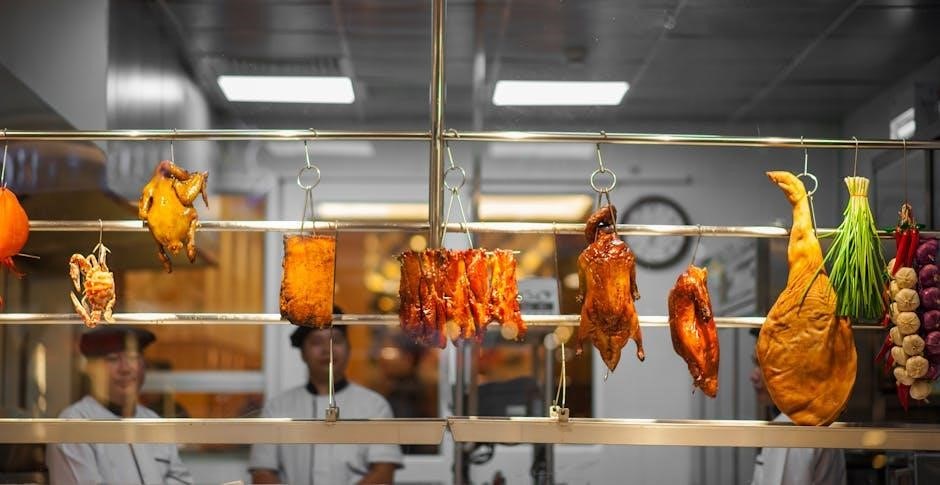
Grilling Instructions
Preheat your grill to medium-high heat for direct grilling or medium-low for indirect cooking. Season the Smithfield Pork Tenderloin generously before grilling. Cook for 5-7 minutes per side, or until the internal temperature reaches 145°F. Let it rest for 5 minutes before slicing to ensure juiciness and flavor retention.
3.1 Preparing the Grill for Pork Tenderloin
Preheating your grill is essential for achieving a perfect sear on your Smithfield Pork Tenderloin. Start by setting your grill to medium-high heat for direct grilling or medium-low for indirect cooking. Ensure the grates are clean and brush them with oil to prevent sticking. For gas grills, allow the grill to preheat for about 10-15 minutes. If using charcoal, wait until the coals are ashed over and evenly distributed. While the grill heats up, pat the pork tenderloin dry with paper towels to remove excess moisture. This step helps the seasoning adhere and promotes even browning. Once the grill is ready, place the pork tenderloin on the grates, away from direct flames if using indirect heat. Proper grill preparation ensures a juicy, flavorful result with a nice char on the outside. Always keep a meat thermometer nearby to monitor the internal temperature accurately. A well-prepared grill sets the stage for a perfectly cooked Smithfield Pork Tenderloin every time.
3.2 Seasoning for Grilled Pork Tenderloin
Seasoning is a crucial step to enhance the flavor of your Smithfield Pork Tenderloin when grilling. While Smithfield tenderloins come pre-seasoned, adding your own touches can elevate the dish. Start with a base of olive oil to help spices adhere. Mix in garlic powder, onion powder, smoked paprika, and a pinch of salt and pepper for a classic blend. For a smokier flavor, add a bit of brown sugar and chili powder. Rub the seasoning mixture evenly over the tenderloin, ensuring all surfaces are coated. Let the meat sit at room temperature for about 30 minutes before grilling to allow the seasonings to penetrate deeper. Avoid over-seasoning, as the pre-marinated flavor should still shine. For a herb-infused variation, sprinkle dried or fresh herbs like thyme or rosemary. Keep it simple or get creative—either way, proper seasoning ensures a flavorful and aromatic grilled pork tenderloin that’s sure to impress. Always season just before grilling to maintain the integrity of the spices and the meat’s texture.
3.3 Direct vs. Indirect Grilling Methods
When grilling Smithfield Pork Tenderloin, choosing between direct and indirect grilling methods depends on your desired outcome. Direct grilling involves placing the tenderloin directly over the heat source, achieving a nice sear and caramelized crust. This method works well for smaller cuts and requires close monitoring to prevent overcooking. Indirect grilling, on the other hand, places the tenderloin away from direct heat, allowing for even cooking and preventing burning. This method is ideal for larger cuts or for those who prefer a more tender, evenly cooked result. For direct grilling, preheat the grill to medium-high heat and cook for 4-5 minutes per side, or until the internal temperature reaches 145°F. For indirect grilling, preheat to medium-low, place the tenderloin away from direct flames, and cook for 15-20 minutes, turning occasionally, until the internal temperature is achieved. Both methods yield delicious results, but indirect grilling is recommended for juicier, more consistent outcomes. Always use a meat thermometer to ensure proper doneness and let the pork rest for 5-10 minutes before slicing.
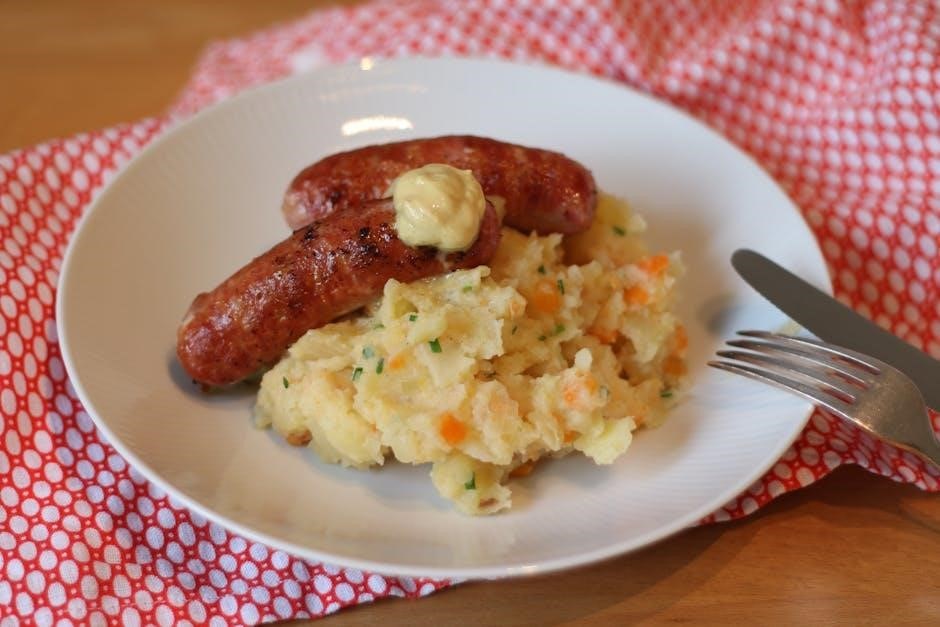
Pan-Searing Technique
Pan-searing Smithfield Pork Tenderloin creates a crispy crust while locking in moisture. Heat a skillet over medium-high, add oil, and sear the tenderloin for 2-3 minutes per side. Finish in the oven for a juicy, flavorful result.
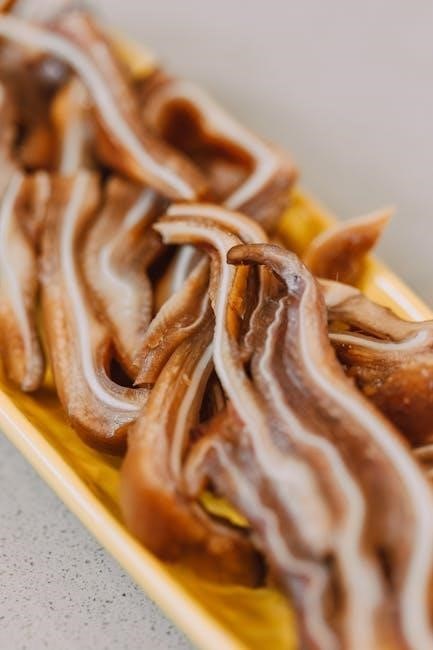
4.1 Searing Pork Tenderloin in a Skillet

Searing Smithfield Pork Tenderloin in a skillet is a great way to achieve a crispy, caramelized crust while locking in juices. Start by heating a skillet over medium-high heat and adding a small amount of oil. Once the oil is hot, place the pork tenderloin in the skillet, away from you to avoid splashing. Sear for 2-3 minutes on each side, or until a golden-brown crust forms. Use tongs or a spatula to carefully flip the tenderloin, ensuring even browning. For larger tenderloins, you may need to sear in batches to avoid overcrowding the skillet. After searing, reduce the heat to medium-low to continue cooking to your desired level of doneness. Use a meat thermometer to check the internal temperature, aiming for at least 145°F (63°C) for medium-rare. Avoid piercing the meat excessively, as this can release juices and dry out the tenderloin. This method ensures a flavorful, restaurant-quality dish with minimal effort.
4.2 Finishing the Pork Tenderloin in the Oven
After searing the Smithfield Pork Tenderloin in a skillet, finishing it in the oven ensures even cooking and prevents overcooking. Preheat the oven to 375°F (190°C). Place the seared tenderloin on a baking sheet or oven-safe skillet. Transfer the skillet directly to the oven or carefully move the tenderloin to a prepared baking dish. Cook for 10-15 minutes, or until the internal temperature reaches 145°F (63°C) for medium-rare. Use a meat thermometer to check the thickest part of the meat. Cover loosely with foil if the crust starts to brown too much. Remove from the oven and let rest for 5-10 minutes before slicing thinly against the grain. This method ensures a juicy, flavorful pork tenderloin with a perfectly seared crust. For extra flavor, add herbs or spices before finishing in the oven. The result is a tender, evenly cooked dish with minimal effort and maximum flavor.
4.3 Deglazing the Pan for Gravy
Deglazing the pan is a simple yet flavorful step to create a rich, savory gravy to accompany your Smithfield Pork Tenderloin. After searing the tenderloin in a skillet, remove it and set it aside to finish in the oven. Leave the drippings in the pan and place it over medium heat. Add a small amount of liquid, such as broth, wine, or even water, scraping the bottom of the pan with a spatula to loosen the caramelized browned bits. Simmer the liquid until it reduces slightly, stirring occasionally, to intensify the flavors. For extra richness, whisk in a tablespoon of butter or flour to thicken the gravy. Season with salt, pepper, or herbs to taste. Serve the warm gravy over the sliced pork tenderloin for a delicious, well-rounded meal. This step ensures no flavor is wasted and elevates the dish to a restaurant-quality finish.
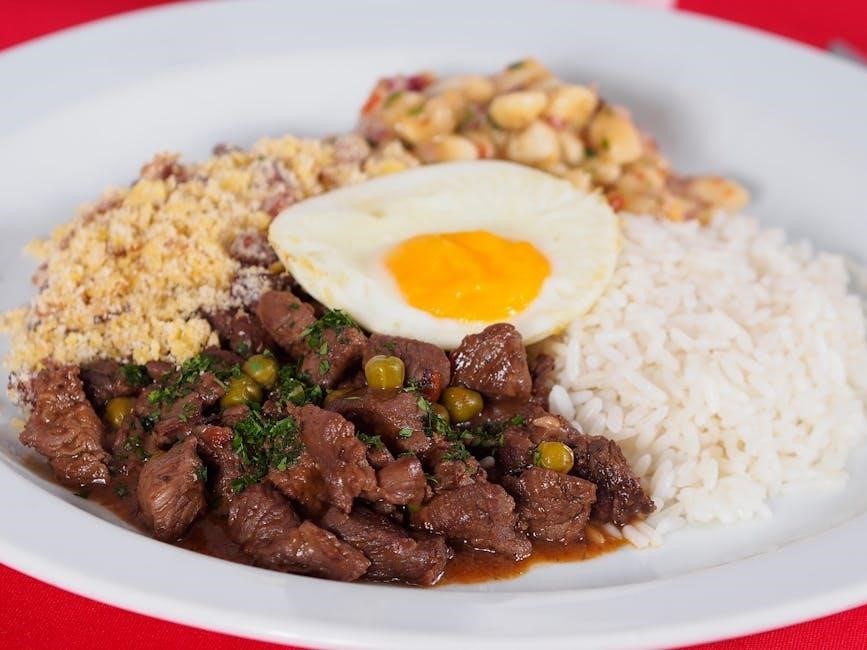
Slow Cooking Method
Cook Smithfield Pork Tenderloin on low for 6-8 hours or high for 4 hours in a slow cooker. Ensure the internal temperature reaches 145-160°F for tender, flavorful results. Perfect for hands-off, stress-free meals.
5.1 Cooking Time and Temperature Guide
Cooking a Smithfield Pork Tenderloin in a slow cooker requires precise time and temperature control for optimal results. For a tender and juicy outcome, cook on the low setting for 6-8 hours or on high for 4 hours. The internal temperature should reach 145°F (63°C) for medium-rare and up to 160°F (71°C) for medium. Use a meat thermometer to ensure accuracy, inserting it into the thickest part of the tenderloin. Avoid overcrowding the slow cooker, as this can affect even cooking. If using a marinade or seasoning, apply it evenly before placing the tenderloin in the slow cooker. For added moisture, you can add a small amount of liquid, such as broth or wine, to the cooker. Let the pork rest for 10-15 minutes before slicing to allow juices to redistribute. This method ensures a flavorful, fall-apart texture that’s perfect for any meal.
5.2 Using Liquid for Moisture and Flavor
Using liquid in slow cooking is essential for maintaining moisture and enhancing the flavor of Smithfield Pork Tenderloin. Adding broth, wine, or marinade creates a flavorful base that infuses the meat with rich, savory notes. For optimal results, pour 1-2 cups of liquid into the slow cooker, ensuring the tenderloin is partially submerged. This method helps prevent drying and promotes tender, juicy texture. Acidic ingredients like vinegar or citrus can break down the meat fibers, while aromatic spices and herbs add depth. Deglazing the pan with liquid before adding it to the slow cooker can also capture caramelized flavors. The liquid simmers gently during cooking, creating a delicious sauce to serve alongside the pork. This technique ensures a hearty, flavorful dish with minimal effort, making it perfect for family meals or special occasions. Properly balancing the liquid ensures the pork stays moist and develops a robust, satisfying taste.
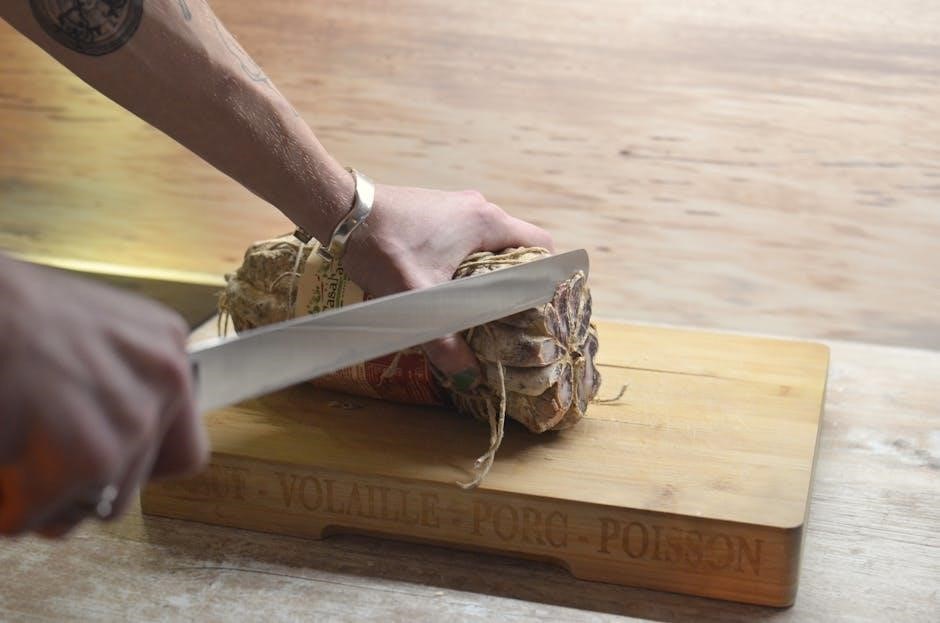
Air Frying Instructions
Air frying Smithfield Pork Tenderloin is quick and easy. Marinate it overnight, then cook at 400°F for 20-25 minutes for a crispy exterior and juicy interior. Perfect for weeknight dinners.
6.1 Ideal Temperature and Time for Air Frying
Air frying Smithfield Pork Tenderloin is a quick and delicious method that delivers crispy results without excess oil; For optimal flavor and texture, preheat the air fryer to 400°F (200°C). Cook the pork tenderloin for 20-25 minutes, flipping it halfway through to ensure even cooking. This time frame ensures the meat reaches an internal temperature of 145°F (63°C), as recommended for safe consumption. The high heat of the air fryer sears the exterior, creating a golden-brown crust while keeping the inside juicy and tender. If marinating, allow the pork to sit in your favorite seasonings beforehand for enhanced flavor. Always use a meat thermometer to verify doneness, especially in the thickest part of the tenderloin. This method is perfect for busy weeknights, offering a hassle-free way to achieve a restaurant-quality dish at home.
6.2 Tips for Crispy Air-Fried Pork Tenderloin
For a crispy air-fried Smithfield Pork Tenderloin, start by patting the meat dry with paper towels to remove excess moisture, which helps the surface brown evenly. Lightly brush the tenderloin with oil or cooking spray to enhance crispiness. If desired, marinate the pork beforehand for added flavor. Preheat the air fryer to ensure optimal results. Avoid overcrowding the basket, as this can prevent even air circulation. Cook at 400°F (200°C) for 20-25 minutes, flipping halfway through to achieve a golden-brown crust on both sides. Use a meat thermometer to confirm the internal temperature reaches 145°F (63°C). For extra crispiness, you can increase the temperature to 420°F (220°C) for the last 5 minutes of cooking. Let the pork rest for 5-10 minutes before slicing to retain juices. These tips ensure a perfectly cooked, crispy air-fried pork tenderloin with minimal effort and maximum flavor.
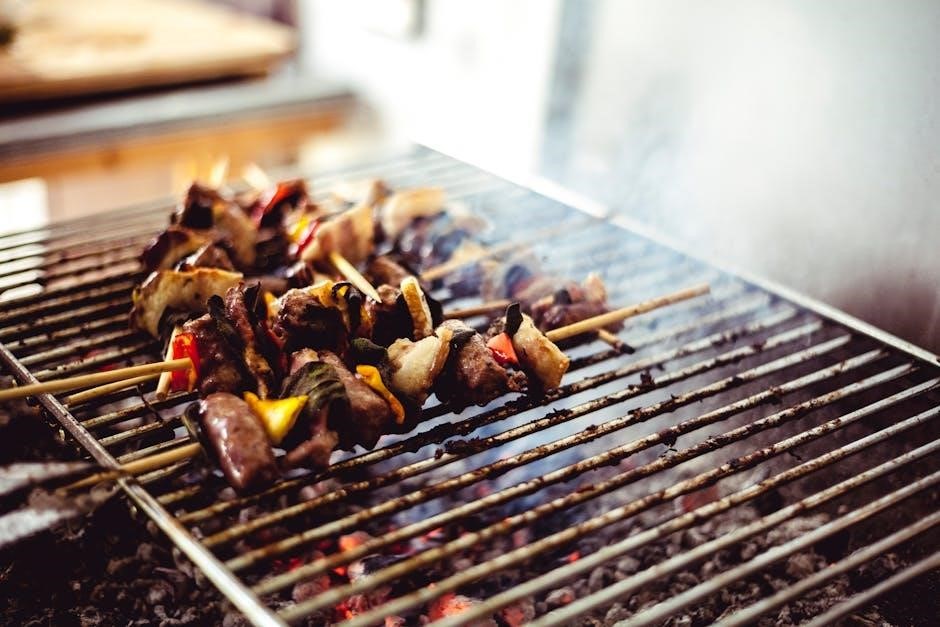
Nutritional Information
Smithfield Pork Tenderloin is a lean, high-protein option, low in fat and calories. It’s rich in essential vitamins and minerals like vitamin B12 and selenium, making it a healthy and nutritious choice for meals.
7.1 Protein and Nutrient Content
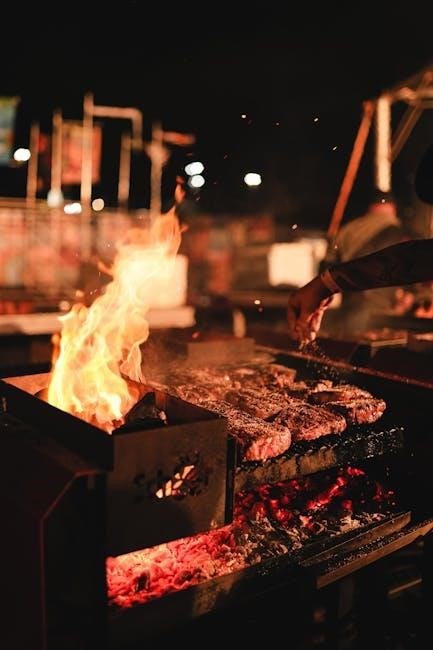
Smithfield Pork Tenderloin is an excellent source of high-quality protein, making it a great option for health-conscious meals. Each 3-ounce serving provides approximately 23 grams of protein, essential for muscle growth and repair. It is also low in fat, with about 4 grams per serving, making it a leaner choice for those monitoring their fat intake. Additionally, pork tenderloin is rich in essential vitamins and minerals, such as vitamin B12, which supports nerve function and energy production, and selenium, an antioxidant that aids in immune system function. It is also a good source of niacin, important for metabolism, and zinc, which supports immune health. With its balanced nutrient profile, Smithfield Pork Tenderloin offers a nutritious and flavorful addition to any meal, aligning with healthy eating goals while delivering great taste.
7.2 Health Benefits of Pork Tenderloin
Smithfield Pork Tenderloin is not only delicious but also a nutritious choice, offering several health benefits. As a lean protein source, it supports muscle growth and repair while being relatively low in calories and saturated fat. The tenderloin is rich in iron, which is essential for healthy red blood cells, and contains zinc, a mineral that supports immune function and wound healing. Additionally, pork tenderloin is a good source of B vitamins, including niacin and vitamin B12, which play roles in energy metabolism and nerve function. Its lean profile makes it a heart-healthy option when consumed in moderation. Furthermore, Smithfield Pork Tenderloin is free from added nitrates and nitrites, appealing to those seeking cleaner, more natural food options. With its balanced nutritional profile, it’s an excellent choice for maintaining overall health and wellness while enjoying a flavorful meal;
Cooking Smithfield Pork Tenderloin is a breeze, thanks to its pre-seasoned flavor and versatility in various cooking methods. Whether you prefer oven roasting, grilling, pan-searing, or slow cooking, this tenderloin delivers juicy, flavorful results every time. Its lean profile makes it a healthy choice, packed with protein and essential nutrients like iron and zinc. With minimal prep and quick cooking times, it’s perfect for busy households seeking a delicious meal without the fuss. Smithfield Pork Tenderloin is a versatile and nutritious option that satisfies both flavor and dietary preferences. Experiment with different seasonings or pair it with your favorite sides for a memorable dining experience. Try Smithfield Pork Tenderloin tonight and enjoy a mouthwatering, stress-free meal!
